Nebulas
A Nebular created an interstellar cloud in space dust, hydrogen, helium gas and plasma. These clouds are formed when parts of the interstellar medium and clump with each other and due to the attraction of the particles that it comprises
The space is not very an empty vacuum. there are gas and dust clouds and a gravitational force primarily based on the proportion of the mass of every single particle. Based on that the greater the attraction, due to the fact lumps together clumps together to create a larger and bigger structure, the pressure inside increases to kind, and when this is high enough, nuclear fusion starts top to emission of higher-energy electromagnetic radiation, which in turn the outer layers of ionized gas.
What is a light year?
A light-year is primarily the distance, ride the light in one year.
- A single year = 31536000 seconds. Light covers a distance of 300,000 kilometers per second.
- light one year be able to travel (31,536,000 x 300,000) = 9,460,800,000,000 kilometers is kilometers.
- We use hypothetically a fog of a perfect circle
- The maximum distance between two extreme points of the nebula will be its diameter
- We use a 1 light year wide nebula. the diameter of the nebula would be 9,460,800,000,000 kilometers
Enjoyable Facts :.
- Nebulas are a mixture of the gases hydrogen and helium and dust and plasma.
- The Word Nebula means the picture is below the nebular where really in black and white, taken researchers and scientists blend, shade and colour these photos based on their chemical composition 'Clouds'' in Latin. Which is proper, due to their "misty" and cloud like appearances.
- If you appear closely, you can see the Orion nebula near Orion's belt. It looks like a tiny dot to the naked eye, even if it is 60 light years.
- There are two signifies forming with the fog. Fog are frequently the result of a giant star or a white dwarf go supernova. The Crab Nebula was formed from a supernova in 1054. This occasion was observed at the time in many cultures. Nebulae such as the Crab Nebula are proof that our universe is continuously altering. The other implies by which a fog can form is if the gas and dust in space (such as the interstellar medium recognized) so dense, it starts in the gravity to be pulled.
- Stars can be born inside fog is such a Pulsar The Crab an extremely young, spinning star that emits radio waves. Due to its special nature, changes in the Crab Nebula in a matter of days (1) can be noticed. This time scale is fairly quick compared to the lengthy life and the slow development of most of the celestial physique. Crab Pulsar as that is in the Crab Nebula
Mystic Mountain -. Carina Nebula
The Mystic Mountain captures the chaotic activity atop a mountain of dust and gas increasing in the Carina Nebula. , The best of a three-light-year tall column of cool hydrogen that carried by the radiation of nearby stars, even though stars gas jets unleash inside the column, which flow from the suggestions
Distance: 7500 light years from Earth away in the constellation Carina
- Higher-resolution version :. Link
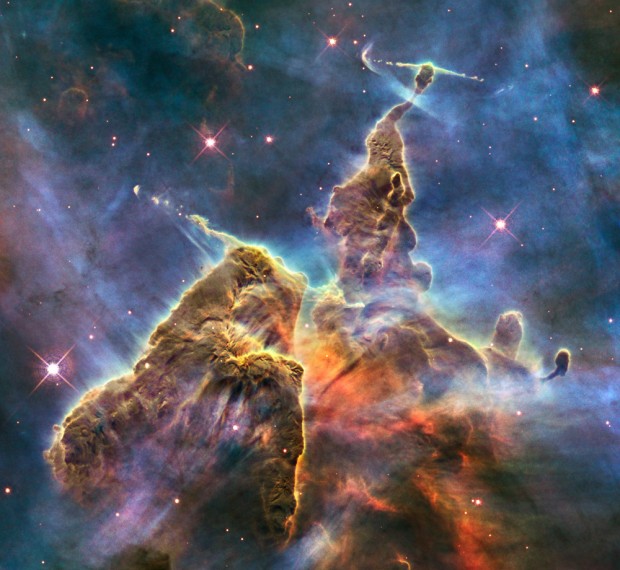
Image Source: NASA, ESA, and M. Livio and the Hubble 20th Anniversary Team (STScI)
Supernova Remnant - Veil Nebula
The Veil Nebula supernova remnant detected to the smallest detail a modest section of the expanding remains of a enormous star that exploded about 8000 years ago. This debris is one particular of the most well-known supernova remnants covering a staggering 110 light years
Distance: .. two,100 light-years away in the constellation Cygnus
- Higher-res version: Hyperlink
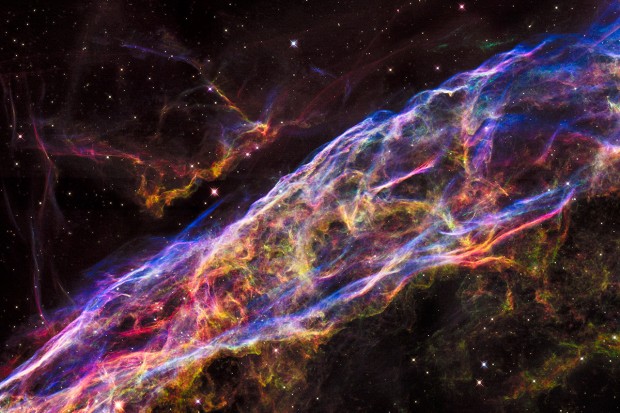
Image source: NASA, ESA, and The Hubble Heritage Group (STScI / AURA)
Gas Pillars - Eagle Nebula
The Eagle Nebula, this eerie dark pillar-like structure, are columns of cool interstellar hydrogen gas and dust that. also incubators for new stars They are element of the Eagle Nebula and as the columns themselves are revealed gradually eroded away by the ultraviolet light, buried tiny beads even denser gas inside the pillars. These globules have been dubbed Or "evaporating gaseous globules ''
Distance" eggs. ":. 6,500 light-years away in the constellation Serpens
- Higher-resolution version: Link
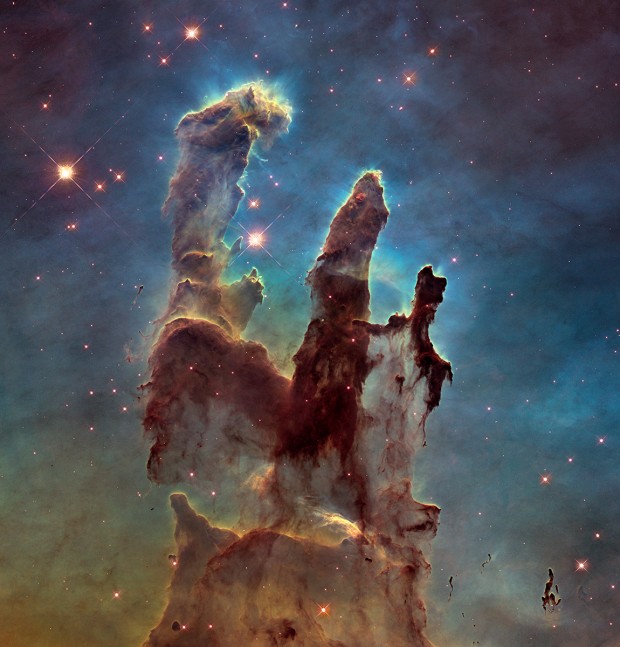
Image supply: The NASA, ESA and The Hubble Heritage Group (STScI / AURA)
Horsehead Nebula
The Horsehead Nebula as shown in infrared wavelengths, the fog is transparent and ethereal, here represented with visible shades. The rich tapestry of the Horsehead Nebula pops against the background of the Milky Way stars and distant galaxies that are easily seen in infrared light
Distance: .. 1,500 light-years away in the constellation Orion
- High-resolution version: Hyperlink
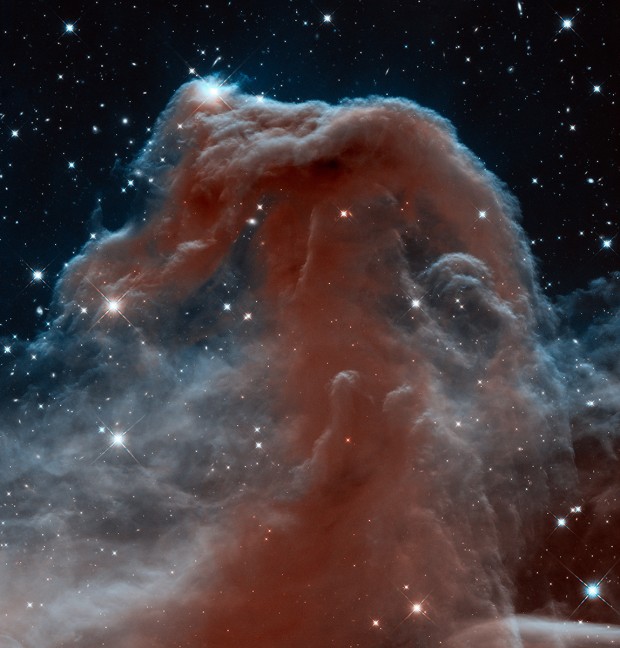
Image source: NASA, ESA, and The Hubble Heritage Team (STScI / AURA)
Helix Nebula
This nebula is so massive that each the Hubble Space Telescope and the Mosaic II Camera on the ground had to be used to capture a comprehensive view. The Helix Nebula is a planetary nebula, which expelled from a dying, sun-like star glowing gaseous envelope. The Helix resembles a straightforward donut as noticed from Earth, but new evidence suggests that the Helix consists of two gaseous disks almost perpendicular to every other
Distance.:. 690 light-years away in the constellation Aquarius
- High-resolution version: Hyperlink
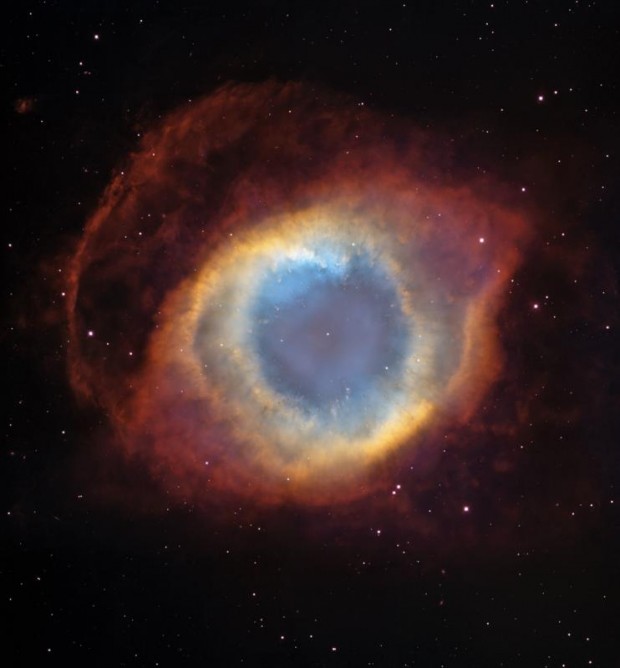
Image source: NASA, ESA, CR O'Dell (Vanderbilt University), M. Meixner and P. McCullough (STScI)
Crab Nebula
This is a mosaic image, one of the largest ever of NASA Hubble Space Telescope of the Crab Nebula taken, a six-light-year-wide expanding remnant of supernova explosion of a star. Japanese and Chinese astronomers recorded almost 1000 years this violent occasion in 1054.
The orange threads are the remains of the star and consist largely of hydrogen. The rapidly spinning neutron star embedded in the center of the nebula is the dynamo driving interior bluish sheen of mist. The blue light comes from electrons whirling at practically the speed of light around magnetic field lines from the neutron star
Distance: .. six,500 light-years away in the constellation Taurus
- High-Res version : Hyperlink
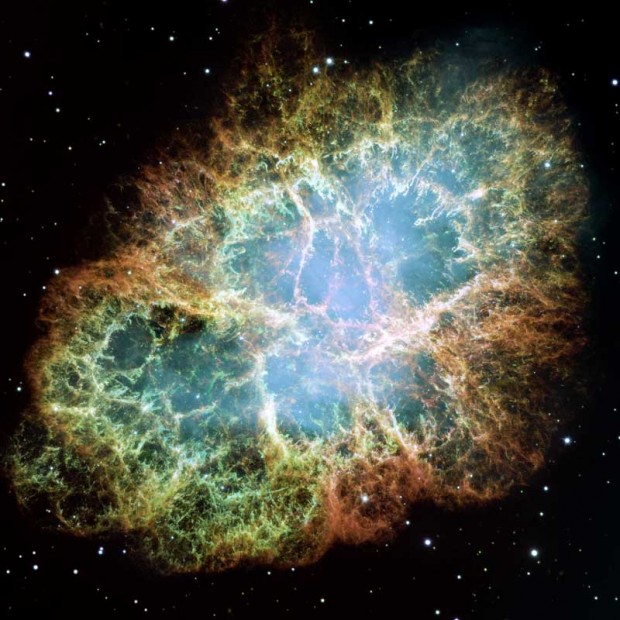
Image source: NASA, ESA, J. Hester and A. Loll (Arizona State University)
Westerlund 2 - Gum 29 Nebula
The sparkling center of the silver wedding fireworks Hubble is a enormous collection of about 3,000 stars referred to as Westerlund two, named for the Swedish astronomer Bengt Westerlund, who discovered the grouping. in the 1960s
Distance: 20,000 light-years away in the constellation Carina
- High-resolution version :. Hyperlink
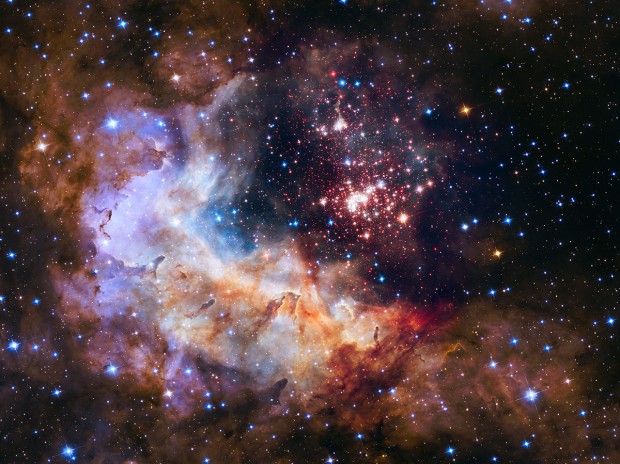
Image supply: NASA, ESA, the Hubble Heritage Team (STScI / AURA), A. Nota (ESA / STScI) and the Westerlund two Science Group
Hubble Panoramic View of Orion Nebula
An image from NASA's Spitzer space telescopes Hubble and appears a lot more like an abstract painting than a cosmic snapshot. The image shows the Orion nebula in an explosion of infrared, ultraviolet and visible light colors.
The heart is a set of four monstrously huge stars, known as the keystone. These giants are about 100,000 instances brighter than our sun and can be utilised as the yellow spot are identified near the middle of the composite.
This image is a false-colour composite, found in the light at wavelengths of .43, .50 and .53 microns is blue. Light with wavelengths of .6, .65 and .91 microns is green. Light of three.six microns is orange, and 8-micron light red
Distance: .. 1,500 light-years away from Earth in the Orion Nebula
- Higher-resolution version: Link
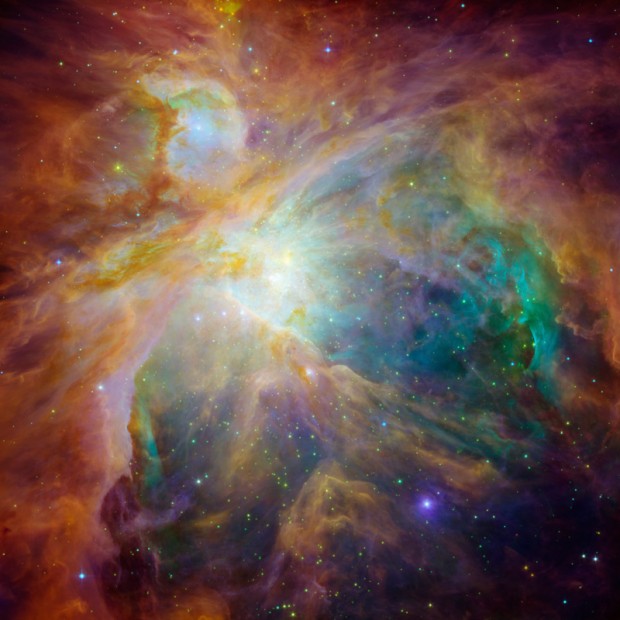
Image supply: NASA, ESA, T. Megeath (University of Toledo) and M. Robberto (STScI)
Tarantula Nebula
An image from NASA's Hubble Space Telescope image of a star hotbeds in 30 Doradus, positioned in the heart of the Tarantula Nebula. The nebula is 170,000 light-years away in the Big Magellanic Cloud, a little satellite galaxy of our Milky Way. No identified star-forming area in our galaxy as big or as prolific as 30 Doradus.
Together the stars in this image are far more massive than our sun millions of instances. The image is roughly 650 light-years across and consists of some rambunctious stars, from 1 of the quickest rotating star to the fastest and most enormous runaway stars
Distance: 170,000 light years away in the Big Magellanic Cloud, a small satellite galaxy of our Milky Way
- High-resolution version :. Hyperlink
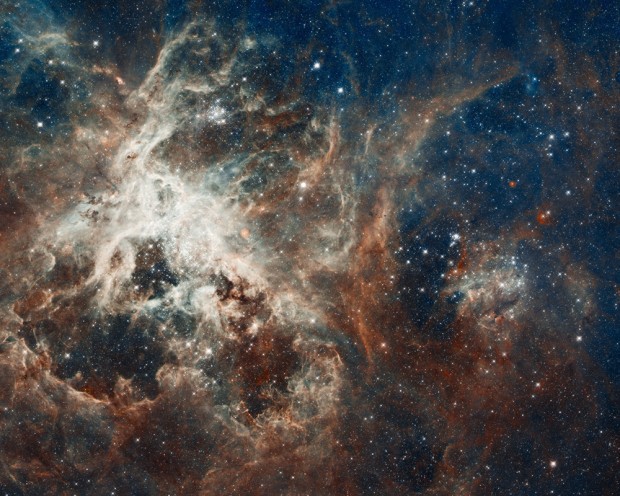
Image supply: NASA, ESA, D. Lennon and E. Sabbi (ESA / STScI), J. Anderson, SE de Mink, R. van der Marel, T. Son, and N. Walborn (STScI), N. Bastian (Excellence Cluster, Munich), L. Bedin (INAF, Padua), E. Bressert (ESO), P. Crowther (University of Sheffield), A. de Koter (University Amsterdam), C. Evans (UKATC / STFC, Edinburgh), A. Herrero (IAC, Tenerife), N. Langer (AIFA, Bonn), I. Platais (JHU) and H. Sana (University of Amsterdam)
Omega Nebula
This intensive image shows a bubbly ocean of glowing hydrogen gas and little amounts of other components such as oxygen and sulfur. This picture captures a modest region within M17, a hotbed of star formation.
The wave-like patterns of gas have been formed and by a flood of ultraviolet radiation from young, massive stars, which lie outdoors the illuminated image to the upper left. The glow of these patterns highlights the three-dimensional structure of the gases. The ultraviolet radiation is carving and heating the surfaces of cold hydrogen gas clouds. The warmed surfaces glow orange and red in this photograph. The intense heat and stress cause some material to stream away from those surfaces, whereby the glowing veil of even hotter greenish gas that masks background structures. The pressure on the suggestions of the waves may trigger new star formation inside them
Distance :. 5,500 light-years away in the constellation Sagittarius
- High-resolution version .: Link
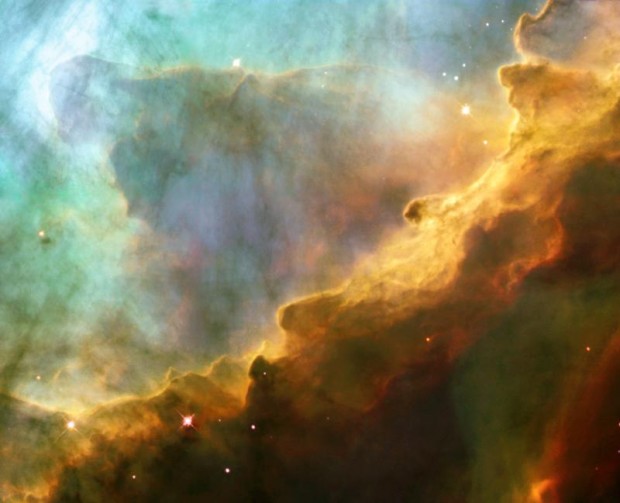
Image-Source: Credit: NASA, ESA and J. Hester (ASU)
Shawn Hunt is the executive director of 1staerials.co.uk

ConversionConversion EmoticonEmoticon